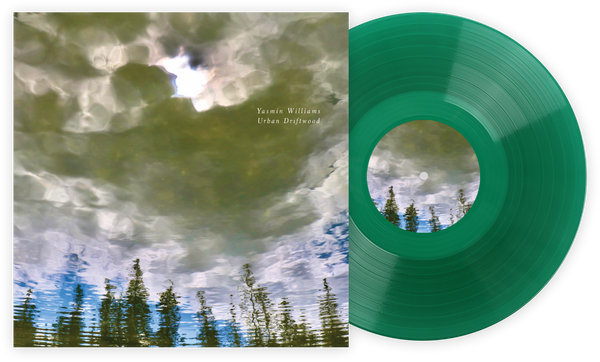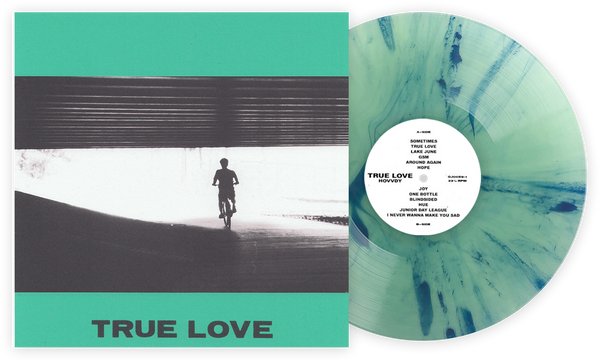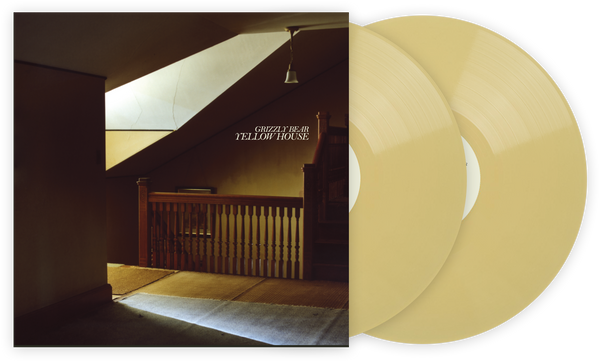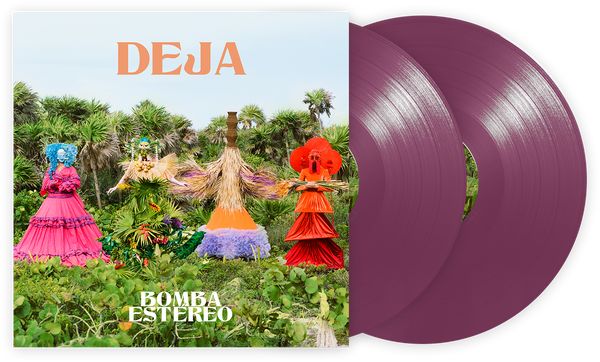Keputusasaan yang Tak Terpadamkan dari 'Jadilah Koboi'
Read Our Liner Notes Interview About Mitski’s New Album
Udara terasa lembab dan sunyi, ritme kehidupan yang menyelimuti bahkan lebih tebal dan sunyi lagi. Perluasan pinggiran kota memberi jalan pada lanskap yang mirip hutan yang tampak terawat dan seolah-olah telah dibiarkan liar terlalu lama. Apa yang terasa seperti kota asing bagi saya adalah, bagi Mitski, sekadar pemberhentian dalam hidupnya yang hampir selalu dalam tur. Pada pertengahan Juni, dengan album kelimanya Be The Cowboy di cakrawala, saya melakukan perjalanan ke selatan untuk mengikutinya di dua tanggal turnya — Oxford, Mississippi, dan Gainesville, Florida — selama tur solo intim di kota-kota kecil di seluruh Amerika yang biasanya tidak dikunjungi oleh artis seperti Mitski.
On stage, Mitski is a human generator of intensity; it's hard to fully understand her without seeing her live. But that intensity extends far beyond just Mitski herself. From the time I first saw her a few years ago — and the six times after that — I’ve been enamored with not only her performance itself, but the robust community and emotion that seems to follow her around everywhere she goes, from big-name festivals to the oft-forgotten corners of the southeast.
It’s a regular occurence to see fans cry openly at her shows. Packed rooms sing along as if her songs were hymns they’d grown up hearing. Many of the fans I talked to during my trip had traveled as long as five hours to see her. For a lot of them, it wasn’t their first time being in the presence of Mitski. Even among the seemingly more “composed” fans, my requests to talk with them about her — her music, her set, what her songs mean to them — were met with beaming faces, blushes, flustered tongues and what could only be described as “a glow” — the same bashful, gooey glint people get when they talk about a new lover.
When we got lunch at an upscale, nearly empty Oxford pizza joint the afternoon of her show there, Mitski told me she has a cavernous understanding of what it’s like to be a fan, and approaches her own shows from that perspective.
“You don't really get that in the rest of your life, but when you go to a show, for just that little moment, you can experience your dream, you can sort through your emotions, and that’s always been really important to me. And I take my job really seriously,” she said with her hands around a cup of tea she’d thoughtfully selected. She sometimes struggles to hold back tears at her own shows, because the rabid fan love and energy is so overwhelming. Her fans, she says, are the reason she’s where she is, even when it feels like the music industry doesn’t know what to do with her.
“It keeps me honest,” she adds. “Because I know I can’t do anything fake or half-assed because the people, that would be betraying the people who listen to me.”
Much of what I about gathered about her in the hours we spoke derived from the anomalous way in which she talks. Her speech pattern and idiosyncrasies are a soothing stew of conviction, intensity and precision, steeped in a base of cautious tenderness. It’s how I’d imagine an articulate and humorous army general would give a strategic pre-battle speech, should they be tasked to deliver it in a room full of sleeping babies.
But the Mitski I spoke with during the day wasn’t quite the saturated power-figure we saw on stage later that night. In conversation, she exuded dry humor, quick wit, a bit of self-deprecation and the type of general gracious humility that moms are always saying “will get you far in life.” For someone known for writing the most tear-jerking tracks, she carried an air of light-heartedness: poking fun at the region (“Politically fucked, but the landscapes are really beautiful!”), unabashedly tying her hair back to dig into our pizza, grabbing my tape recorder like a microphone and pouring out a couple lines of “I Will Always Love You” and exclaiming “That’s for free!” But her performance space is a bit more sacred.
“While I’m in that space for an hour, we can laugh about it later, but in that little space, it’s like therapy. You don’t want your therapist laughing at you while you're crying in the room. But you can laugh about yourself being in therapy after your session. I play up that side at the show because I think that heightens the experience, but I’m not that person all the time.”
Perhaps it’s because she moved around so much growing up — she was born in Japan and has lived in 13 different countries — or maybe it’s her natural creative drive, but Mitski appears to repel stagnance. Over the past six years, she’s cultivated four studio albums with a substantial amount of artistic growth from one to the next. Her penchant for crushing lyrics and melodic ingenuity has remained a constant across her discography, but Mitski’s natural instinct to push herself is traceable across her career.
While studying at SUNY Purchase Conservatory of Music, she recorded her first two piano-heavy albums as student projects. Mitski came out of the gates with 2012’s Lush, a raw, innocent exploration of a talented musician finding the legs beneath her, creating a chamber pop catalogue of the fragile angst of early adulthood. 2013’s Sad, New Career in Business is similar in its chamber pop sonics and dramatic intensity, but her obvious rise in artistic confidence laces the album with rewarding risks. When the brilliant Bury Me At Makeout Creek came out in 2014, Mitski had transitioned into guitar-heavy indie rock and began to develop the small cult-like following that hoisted her razor-sharp-yet-tender, addictive next album, 2016’s Puberty 2, into the kind of mainstream success that made it a regular on “Best of 2016” lists.
After the success of Puberty 2, Mitski was on the road endlessly for years, night after night, creating a therapeutic space for countless audiences. Understandably, she was “spent.” She compares her subsequent songwriting approach to the pop art and emotionally absent creative process of Andy Warhol.
“It might make us feel happy and it might look pop, but when he made it, he wasn’t feeling any of that. He just, like, printed an image. And I kind of wanted to draw from that idea of just being dead inside, but making pop music,” she said.
Be the Cowboy is simultaneously her most and least conventionally pop album to date, and the most dramatic pivot in her discography. Her sparkly lean-away from a blatantly “indie rock” sound screams “pop!” at the top of its lungs, but a closer probe at song structures that dodge repetition and defy verse/chorus conventions exposes a warped shape of what a pop song can be. Her fresh sonic direction was a conscious effort on her part, informed by the desire to progress as an artist and the fear of the same stagnance she’s seen other artists fall into when they get too comfortable.
“I’m not good at shutting things out, I absorb everything, and I care very much what people think,” she said with a coy smile. “But I don’t think I was like trying to make what people would like... For example, people said, ‘Oh, you’re so good at the distorted guitar grungy sound,’ and I made a mental note that I’m never gonna do that again.”
She laughs and blames her astrological sign, a textbook Libra: “It’s like, ‘Love me! Love me!’ and then someone loves you and you’re like, ‘Ugh.’”
At any rate, Be the Cowboy is an intentionally evolved version of Mitski — a message she wants to send the second we hit play. “In ‘Geyser,’ I have the little blip-like glitch in the beginning. That’s the first song in the album, and I kind of wanted to make a statement, just like: ‘This is not gonna be fun for you,’” she laughed.
Some of the new sounds on the album were a bit more circumstantial. She wrote the second single — a cabin-fever disco bop called “Nobody” — after the rest of the album was recorded. After touring for two years straight, she found herself in Malaysia to pass the holiday season before heading to Australia to finish her tour. She knew no one in the whole country, but she didn’t think much of spending the time alone, as her family never celebrated Christmas. With no one to interact with, and everyone she knew in the U.S. celebrating the holidays with friends and family, she found herself feeling deeply alone.
“I was just like, ‘Oh my god! Somebody talk to me!’” she said. “I got this feeling like, you know when you’re like so lonely that all you can do is just dance? So I wanted to make a dance song that’s about a horrible feeling.”
With a burning desire to write and no instruments to write with, she walked to the nearest Toys “R” Us and bought the cheapest keyboard they had, a two-octave toy piano, and wrote “Nobody.”
Unquenchable full-throttle desperation — like the desperation to write that fueled Mitski’s keyboard purchase — slips through these neat, controlled pop tracks in screaming glimpses. The beginning of synthy, rhythmically militant track “Washing Machine Heart” complacently repeats a heartbreaking invitation: “Toss your dirty shoes in my washing machine heart / baby, bang it up inside,” begging to be hurt over being ignored. But this tidy request eventually dissipates into a desperate plea: “Why not me? Why not me?” Cracking facades and the dissolution of complacency are the the undercurrents of Be the Cowboy.
Mitski became fascinated with the character of “this very repressed woman who’s starting to unwind,” a theme that’s palpable in the album’s visual aesthetics. Her Hitchcock-inspired, 1950s housewife-inspired images feature an icy Mitski, heavily clothed in sunglasses, scarves, gloves and, on the cover, a white abstractly flowered cap, a full face of perfect makeup, and a set of tweezers hovering over her cold gaze.
“I was just really interested in that time and Hitchcock blondes, and how they're always portrayed as really icy and unknowable and mysterious, but I felt like that was such a man’s view on these women and I was like, ‘What are they thinking?’ Like, what do they go home and do when Hitchcock is not watching them?” she said of the visuals. “I just had these ideas of a woman who’s like trying to keep it together and and trying to stay in control but it’s really hard. And then I think my mind looked for ways that was represented in media, and while I was mixing and finishing the album, put all of the ideas that existed in the world that kind of represented that.”
Fictional worlds are something she’s used to both creating and drawing from. Between being a woman, having a young female fan-base and writing emotionally insightful songs, the criticism, discussion and understanding of Mitski has been gendered by inaccurate assumptions. This time around, she wants to be clear: Her songs aren’t diary entries, they’re concepts she crafts. She devoted herself to explicit character and theme creation that blatantly aren’t about her own life, like with the track “Me and My Husband.” The campy track explores both the housewife trope and male validation as a source of worth (“I am the idiot with a painted face / in the corner taking up space / but when he walks in, I am loved”), but also comes from a place of sincerity.
“I see a lot of relationships [where] it’s not even about being in love anymore, it’s just we’ve created this life together and we’re gonna live it together. In a way I think that’s like beautiful in a different kind of way, because it’s not flowery and beautiful Romeo and Juliet, but it’s like, ‘I’ve chosen you,’ you know? This is, like, real life now,” she explains.
At an average of 2-3 minutes across the 14 tracks, her songs read like short stories, a fiction format she says she loves — citing Shirley Jackson and Kelly Link among her favorite authors — and one she gravitates to naturally as a result of the way people have treated her.
“I’ve never been someone who was listened to, so I learned to get my point across in a short amount of time, like the short amount of time that I have someone’s attention, I try to get all the information across. Because I’m usually not given the time of day, or I haven’t been,” she said.
Because of this, in few words and fewer minutes, she’s able to create impossibly potent vignettes and rich metaphors: an older couple slow dancing, two “old friends” meeting in a diner over coffee and mutual vulnerability, a materialization of the feeling of wanting to be kissed so bad it hurts.
Kissing, by the way, is another common theme throughout the album — something the protagonists in her songs furiously and frequently pine over. When I ask her about it, she grins.
“I think so much of hooking up now is about getting right down to it. I miss the utter romanticism of a kiss. I think it’s actually so romantic. I’m just enamored by the idea. A good kiss. I think I value that more than a good fuck,” Mitski said.
The literal voice of the album is a character in and of itself. Mitski and her producer Patrick Hyland set out to replicate the sound of a live performance. She’d just started listening to David Bowie for the first time around the time she wrote and recorded Be the Cowboy, and she gravitated to the live sounds of the era, the way you could actually hear people playing the instruments. She kept some of the mistakes in the recordings to preserve their organic sound. And while most vocals in today’s songs are doubled for consistency and fullness, she intentionally used single vocals and opted out of harmony to get a “person alone on stage pouring their heart out” effect.
“I wanted the person onstage really feeling themselves and in the moment and singing, but also there’s also something really kitsch and comical about that, very musical theatre about it. Like, ‘I’m singing on stage under a spotlight!’ and the melodrama of that.”
Her smirking portrayal of melodrama in the album’s sonic character resembles the accusations of melodrama culture imposes on women songwriters, but Mitski also said the showy maudlinism was a way to avoid taking herself to seriously and laugh at herself a bit, as a person who pours her heart out under a spotlight for a living.
As she created and examined narratives of put-together women breaking at the seams, she thought about the ultimate symbol of white American masculinity and dominance: the cowboy. Where a woman’s narrative of indepence is inherently lonely and desperate, the cowboy’s is strong. She remembers an artist she’d watch perform in college with a magnetic, confident, cowboy-like stage presence she loved. When she never heard from or about him after college, she realized she missed his stage presence, and something clicked.
“I should just be the swaggering white guy onstage… Like, well, if that’s what I want then I should just do it. It’s what I want to see, I should just do it. Or in a situation, I should just forget that I’m an Asian woman, and just be like, ‘What would a cowboy do in this situation?’ And he’d be like, ‘I ain’t gon’ take that shit!’” she smiles through her fake cowboy accent.
But as any protagonist in Be the Cowboy — and even more women in real life — can tell you, “being the cowboy” is much easier said than done. Trying to “be the cowboy,” after a lifetime of societal pressure to be anything but the cowboy, often means days of failed attempts, like in the exasperated, lackadaisical track “Lonesome Love”: “Spend an hour on my makeup just to prove something / Walk up in my high heels all high and mighty / and you say hello and I lose.” We aren’t all repressed 1950s housewives, but the residue of that ideal is still threaded into the fabric of our culture, and resisting it often entails a vicious cycle of exhaustion, frustration and self-hatred: “Nobody fucks me like me,” she sings on the track.
“She’s almost trying to be the cowboy, trying to be that figure, trying to be strong, trying to be completely fine with being alone in solitary and a lone figure, but just failing and not being able to,” Mitski said. “Or maybe seeming like she’s able to, but at home, it’s hard, you know?
“It’s almost like this person is trying to be the cowboy. It doesn't mean that she is being the cowboy, but the goal is to be the cowboy.”
Amileah Sutliff is a New York-based writer, editor and creative producer and an editor of the book The Best Record Stores in the United States.
Related Articles
Kulübe Katılın!
Şimdi Katıl, Başlangıç Fiyatı: $44
Diskon eksklusif 15% untuk guru, mahasiswa, anggota militer, profesional kesehatan & petugas tanggap darurat - Dapatkan Verifikasi Sekarang!








